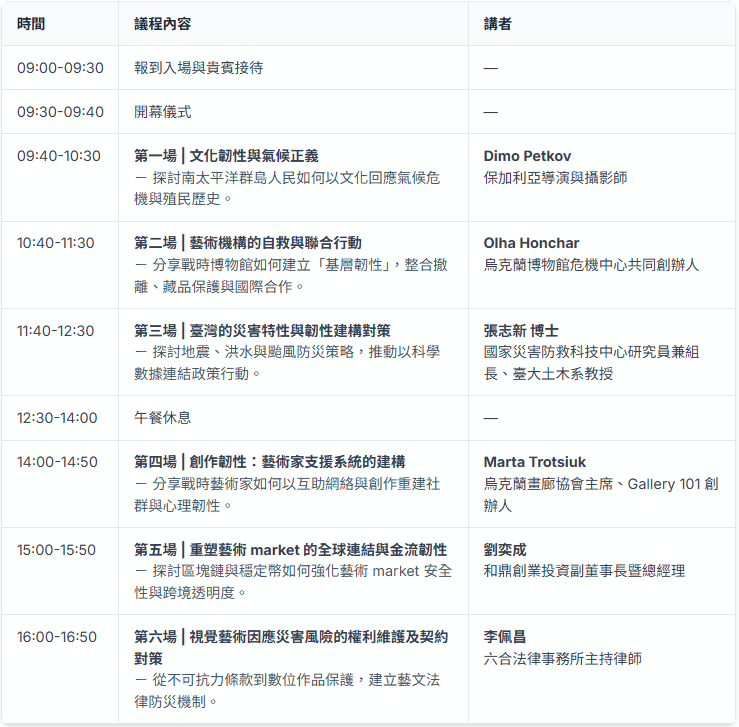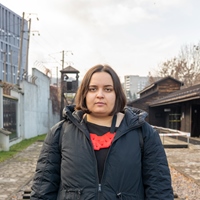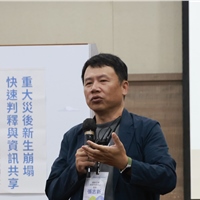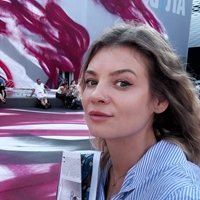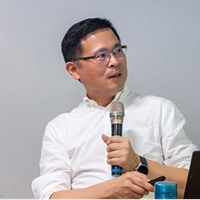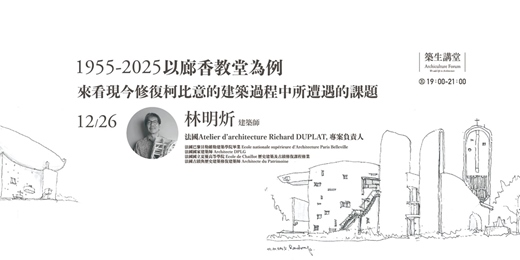🌍 2025視覺藝術災害應變與風險管理國際論壇
氣候風險 × 政策策略 × 實務案例
全面掌握藝術韌性關鍵行動!
極端氣候、地震洪災與地緣政治風險日益加劇,視覺藝術產業面臨前所未有的挑戰。如何讓藝術機構、畫廊與創作者具備面對災害的「韌性」?
本論壇由文化部指導,社團法人中華民國畫廊協會主辦,台北藝術產經研究室、永續辦公室執行,聚焦於建立台灣藝術產業的災害應變與風險管理架構,邀集國內外專家分享第一線經驗與政策思維。
以「國際經驗 × 實務行動 × 在地策略」為主軸,從氣候災害到戰爭衝突,探討藝術文化如何在危機中重建與持續。
|論壇議程 |
🎤 主題演講與講者介紹
🎯 第一場|文化韌性與氣候正義
👤 講者|Dimo Petkov|保加利亞導演與攝影師
📖 在氣候變遷與殖民歷史的重壓下,南太平洋的島嶼文化以舞蹈與音樂發出「我們不是溺水,我們在戰鬥」的吶喊。
保加利亞導演 Dimo Petkov 透過紀錄片《共生之舞:美拉尼西亞的韌性故事》,以詩意的鏡頭捕捉人民以文化作為生存的語言。他的影像讓觀眾看見文化不只是歷史的回聲,而是一種面對災難的行動,一場用身體與節奏抵抗消逝的儀式。
💬 文化,是災難中最強韌的語言。
🎯 第二場|藝術機構的自救與聯合行動
👤 講者|Olha Honchar|烏克蘭博物館危機中心共同創辦人
📖 戰爭讓烏克蘭的博物館陷入危機,但也催生了前所未有的團結。烏克蘭「博物館危機中心」(Museum Crisis Center)在戰火初起時成立,協助上千名文化工作者撤離與保護藏品。
講者 Olha Honchar 不僅是該中心共同創辦人,也擔任利沃夫「恐懼領土紀念館」館長。她分享戰時文化機構如何在停電、封鎖與轟炸中維持教育與展覽,並透過國際合作建立支援網絡。
💬 當制度崩解,文化的信念讓文明延續。
🎯 第三場|臺灣的災害特性與韌性建構對策
👤 講者|張志新 博士|國家災害防救科技中心研究員兼組長、臺灣大學土木系合聘教授
📖 臺灣位於多災交錯帶,地震、洪水與颱風頻仍。
講者張志新博士以科學數據與防災科技視角,分析台灣如何從「災害潛勢地圖」到社區防災實踐,建立由下而上的防災文化。他指出,風險認知的缺乏往往比災害本身更可怕,唯有結合科技、政策與教育,才能讓社會真正具備韌性。
💬 防災,不只是科技,更是文化。
🎯 第四場|創作韌性:藝術家支援系統的建構
👤 講者|Marta Trotsiuk|烏克蘭畫廊協會主席、Gallery 101 創辦人
📖 當炸彈落下時,烏克蘭的藝術家選擇拿起畫筆而非逃離。
講者 Marta Trotsiuk,烏克蘭畫廊協會主席與 Gallery 101 創辦人,發起「文化對抗侵略」行動,串聯逾千名藝術家建立互助網絡。她以親身經驗講述創作如何成為心理復原的力量,讓藝術在混亂中重建秩序與希望。
💬 藝術,是在崩壞中重建世界的力量。
🎯 第五場|重塑藝術市場的全球連結與金流韌性
👤 講者|劉奕成|和鼎創業投資副董事長暨總經理
📖 當藝術市場邁向數位化,交易安全與跨境金流成為新挑戰。
講者劉奕成,跨足金融、科技與文化領域,深入探討區塊鏈與穩定幣如何重塑藝術市場生態。他指出,未來藝術交易將結合金融科技,透過透明化與即時支付,強化信任與流通。
💬 金融韌性,是數位時代藝術的基礎。
🎯 第六場|視覺藝術因應災害風險的權利維護及契約對策
👤 講者|李佩昌|六合法律事務所主持律師
📖 極端氣候與突發事件讓藝術契約必須重新思考「不可抗力」。
講者李佩昌,長期為文化部與藝文機構提供法律顧問服務,指出從展覽保險到數位備份,防災意識應成為契約條款的一部分。他主張以法律建立文化防災基礎,讓創作者在不確定的時代仍能受保障。
💬 法律,是文化永續的盾牌。
| 主辦單位 |
指導單位 | 文化部
主辦單位 | 社團法人中華民國畫廊協會
執行單位 | 台北藝術產經研究室、永續辦公室
| 活動資訊 |
- 時間 2025/ 11/20 (四) 09:00-16:50 (09:00 開放入場)
- 地點 政大公企中心 A1034室
| 為什麼你不能錯過 |
- 掌握關鍵韌性: 在極端氣候與地緣政治風險下,全面掌握藝術產業的災害應變與風險管理架構。
- 連結國際經驗: 邀集國內外專家,分享從氣候災害到戰爭衝突的第一線實務經驗。
- 擬定在地策略: 聚焦台灣,探討藝術文化如何在危機中重建、自救與持續。
| 適合對象 |
藝術機構、畫廊、博物館與文化場館營運者、策展人、藝術家、藏家、藝術產業政策制定者、風險管理顧問、藝術媒體、藝術管理與文化資產相關科系師生,及對藝術韌性與永續發展有高度關注的決策者。
| 公務人員進修時數 |
全程參與本論壇(上午及下午場次)可核發 8 小時學習時數。
申請方式: 請於活動現場報到時,主動告知工作人員需登錄時數,並於活動結束時簽退。
|Forum Agenda |
🎤 Keynote Sessions & Speakers
🎯 Session I|Cultural Resilience and Climate Justice —Lessons from Wantoks: Dance of Resilience in Melanesia
👤 Speaker|Dimo Petkov|Bulgarian Director & Cinematographer
📖 Amid rising seas and colonial scars, the people of Melanesia turn to dance and music as acts of defiance.
Bulgarian filmmaker Dimo Petkov, co-creator of Wantoks: Dance of Resilience in Melanesia, captures this poetic struggle—where culture becomes both survival and protest. His lyrical documentary explores how collective performance transforms trauma into resistance.
💬 Culture remains the most enduring language of survival.
🎯 Session II|Self-Rescue and Collective Action of Art Institutions
👤 Speaker|Olha Honchar|Co-founder, Museum Crisis Center; Director, Territory of Terror Memorial Museum
📖 When war disrupted Ukraine’s cultural life, museums became sanctuaries of resilience.
Olha Honchar shares how her team organized evacuations, preserved collections, and offered psychological support amid chaos. Her work demonstrates that culture does not collapse under pressure—it adapts, rebuilds, and connects across borders.
💬 Resilience begins where systems fail but people unite.
🎯 Session III|Disaster Characteristics in Taiwan and Strategies for Building Resilienc
👤 Speaker|Dr. Chih-Hsin Chang|Researcher & Section Chief, National Science and Technology Center for Disaster Reduction (NCDR); Adjunct Professor, Department of Civil Engineering, National Taiwan University
📖 Taiwan’s geography makes it a living laboratory for resilience.
Dr. Chih-Hsin Chang integrates scientific data with policy insight to analyze how societies evolve through crises. He reminds us that awareness, not technology alone, saves lives.
💬 Preparedness is not a reaction—it is a culture.
🎯Session IV|Creative Resilience: Building Support Systems for Artists
👤 Speaker|Marta Trotsiuk|President, Ukrainian Gallerists Association; Founder, Gallery 101
📖 In times of destruction, creation becomes resistance.
Marta Trotsiuk leads initiatives like Culture Against Aggression to unite artists, offering networks of mutual aid and hope. Her efforts show how art transforms pain into connection, and creativity into courage.
💬 To create amid chaos is to declare existence.
🎯Session V|Reshaping Global Connectivity and Financial Resilience in the Art Market
👤 Speaker|Icheng Liu|Vice Chairman and General Manager, Pegatron Venture Capital Co., Ltd.
📖 Icheng Liu bridges the worlds of finance, technology, and art.
He explores how blockchain and stablecoins enhance transparency and liquidity, ensuring financial stability for the art ecosystem. With a vision grounded in innovation, Liu redefines the art market&rsquos strength through digital trust.
💬 Resilience in art is built on trust and transparency.
🎯Session VI|Protecting Rights and Contractual Strategies for Visual Arts in Disaster Risk Contexts
👤 Speaker|Patrick Lee|Managing Partner, New Hope Law Firm
📖 As disasters—natural or digital—become the new norm.
Pei-Chang Li advocates embedding disaster awareness into legal structures. His expertise ensures that art contracts evolve with the times, safeguarding creators and institutions alike.
💬 Law is not only protection—it is preservation.
| Organizers |
Advisor | Ministry of Culture
Organizer | Taiwan Art Gallery Association
Executive Organizers | Taipei Art Economy Research Centre, Sustainability Office
| Event Information |
- Time 2025/11/20 (Thu) 09:00-16:50 (Doors open at 09:00)
- Venue Room A1034, NCCU Center for Public & Business Administration Education
| Why You Can't Miss This |
- Master Key Resilience: Gain a comprehensive understanding of the disaster response and risk management framework for the art industry under extreme climate and geopolitical risks.
- Connect with International Experience: Hear from local and international experts sharing frontline practical experience, from climate disasters to wartime conflicts.
- Formulate Local Strategies: Focus on Taiwan and explore how arts and culture can rebuild, self-rescue, and endure in times of crisis.
| Who Should Attend |
Operators of art institutions, galleries, museums, and cultural venues; curators; artists; collectors; art industry policymakers; risk management consultants; art media; faculty and students in arts management and cultural heritage; and decision-makers with a keen interest in art resilience and sustainable development.


